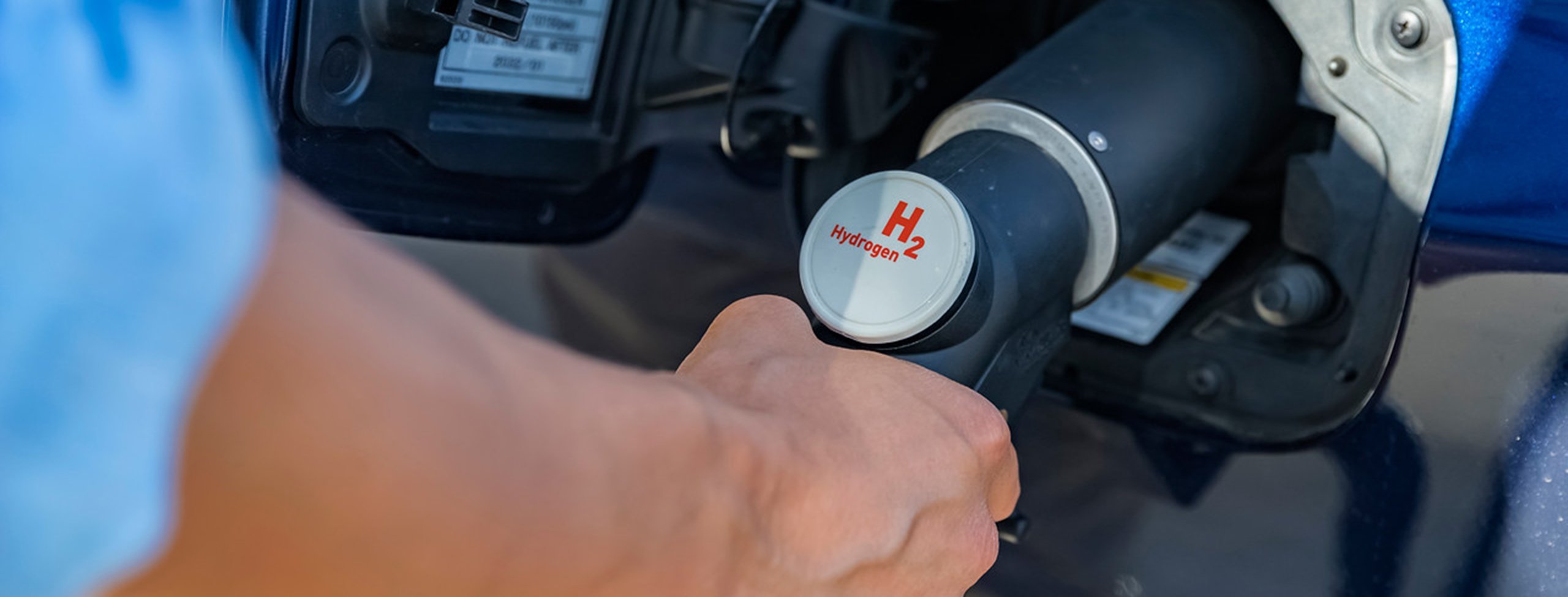
26 January 2023 • 7 minute read
Biden Administration releases Blueprint for transportation decarbonization by 2050
The Biden Administration recently released its U.S. National Blueprint for Transportation Decarbonization setting forth its vision for “decarbonizing” the nation’s transportation sector by 2050, including a number of high-level strategies and sustainability targets aimed at achieving that ambitious goal.
Some of the Blueprint’s decarbonization goals may be difficult to achieve in the short to medium term. Nonetheless, the document provides new information regarding the Administration’s plans for driving aggressive reductions in greenhouse gas (GHG) and other air pollutant emissions, using federal funding and authorizations included in the recent Inflation Reduction Act (IRA), Infrastructure Investment and Jobs Act (IIJA), and other laws. The Blueprint further confirms that zero-emission vehicles and sustainable fuels are central to the US climate change mitigation agenda.
The strategies in the Blueprint build upon a September 2022 Memorandum of Understanding between the Department of Energy (DOE), Department of Transportation (DOT), Department of Housing and Urban Development (HUD) and the Environmental Protection Agency (EPA). Those federal agencies are directed to develop strategies to achieve the goals and objectives outlined in the Blueprint, in the form of detailed Action Plans.
More information regarding each Agency’s specific actions to meet the decarbonization goals will become available as these Action Plans take shape. Many of the Blueprint’s long-term objectives for 2030 to 2050 rely on federal regulatory actions (eg, federal GHG emissions and corporate average fuel economy standards), grants, and discretionary actions and programs. Accordingly, those objectives may be subject to change based on experience and varying priorities of future administrations.
Following is an overview of significant components of the Blueprint and how its decarbonization strategies may affect the transportation sector.
Blueprint’s strategies and timeline for decarbonization of the transportation sector
The Blueprint identifies three key strategies for decarbonization:
- Transitioning to clean options by deploying zero-emission vehicles and fuels
- “Increasing convenience by implementing system-level and design solutions” and
- “Improving efficiency through mode shift and more efficient vehicles.”
While the document anticipates that each of these strategies will reduce GHGs and other transportation-related emissions, it posits that a transition to zero-emission vehicles and fuels “is expected to drive the majority of [transportation] emissions reductions.”
For each of the three strategies, the Blueprint establishes short-, medium-, and long-term goals, organized in roughly 10-year segments. It identifies six “levers” federal agencies should use to advance sector-wide decarbonization, including new policies and infrastructure investments.
The Blueprint encourages agencies to facilitate stakeholder involvement through research, public-private partnerships, trainings, and other initiatives. Throughout, the Blueprint emphasizes that decarbonization of the transportation sector will yield co-benefits such as reducing particulate and other air pollutant emissions, enhancing sustainable urban planning, and advancing environmental justice objectives.
In general, the short-term objectives seek to use the funding and authority included in the IRA and IIJA to spur sector-wide transition to zero tailpipe-emission vehicles and sustainable fuels. In the medium and long term, the Blueprint sets out goals for scaling and accelerating adoption of sustainable transportation solutions through new policies, and additional targeted public investments, partnerships, and programs.
Transitioning to clean vehicles and fuels for the highest emitting transportation modes
The Blueprint attributes over 70 percent of transportation sector GHG emissions to the combined emissions of light-duty vehicles, medium- and heavy-duty trucks and busses, and aircraft (other transportation modes generating GHG emissions include rail, maritime, off-road and pipelines). Therefore, those modes are at the forefront of the Blueprint’s technology transition strategy.
The Blueprint concludes that further adoption of battery electric vehicles is the most effective strategy to decarbonize of light- and medium-duty vehicle transportation. It restates the Biden Administration’s goal of 50 percent zero-emission vehicle sales by 2030, announced in August 2021. To facilitate progress toward that goal, the document calls for, among other things, continued investments in electric vehicle charging infrastructure.
The Blueprint further targets achieving 100 percent zero-emission medium- and heavy-duty new vehicle sales by 2040, a commitment the US made during the United Nations climate negotiations at the 27th Conference of the Parties to the United Nations Framework Convention on Climate Change (COP 27) in November 2022.
While the Blueprint envisions battery electric propulsion as the primary technology solution for light- and medium-duty vehicles, it also projects long-term viability of hydrogen and biofuels, particularly for long-haul heavy-duty trucks and rural communities.
The Blueprint points to recent policies encouraging broader adoption of electric vehicles as examples of the “levers” available to federal agencies to effectuate these targets. Examples include increased stringency of the corporate average fuel economy and GHG emissions standards for light-duty vehicles and new electric vehicle tax incentives created by the IRA. It recommends further investment in battery technology research and increases in US domestic clean vehicle and battery manufacturing capabilities, both of which are goals promoted by the IRA.
For aviation, the Blueprint identifies sustainable aviation fuel from biofuels, ammonia, hydrogen, and methanol, as potential “drop-in replacement” fuels capable of providing short- and long-term emissions reductions. Interim targets for aviation are borrowed from the Biden Administration’s Sustainable Aviation Fuel Grand Challenge Roadmap, which set goals of reducing aviation emissions by 20 percent by 2030, producing at least 3 billion gallons of sustainable aviation fuel per year by 2030, and increasing that production to 35 billion gallons by 2050.
“Increasing convenience by implementing system-level and design solutions”
Another Blueprint strategy aims to foster more sustainable transportation systems. This includes encouraging regional, state, local, and Tribal governments to incorporate sustainability into decisions for designing their communities; prioritizing different modes of transit; and balancing competing interests regarding the movement of people, goods, and services.
The Blueprint instructs the participating federal agencies to provide assistance to state- and local-level decision-makers regarding best practices, data and analytics, transportation planning tools, and other resources. It also encourages initiatives such as equitable transit-oriented development, transportation demand management, and zoning reform. The Blueprint endorses “smart planning” by states and local authorities, including locating renewable infrastructure (such as public vehicle charging and renewable energy facilities) on highway or rail rights of way.
“Improving efficiency through mode shift and more efficient vehicles”
A third strategy included in the Blueprint would build on the vehicle- and system-level initiatives described above by increasing environmentally sustainable passenger and freight transportation (eg, rail and shared transit vs personal vehicles) and encouraging individuals and entities to incorporate sustainability into their transportation decision-making. Suggestions include expanding funding and incentives for use of efficient vehicles and transportation modes, and greater investments in rail and other in energy-efficient options for the movement of passengers and freight.
Given that passenger transportation is largely an individual decision, the Blueprint calls on employers and local governments to adopt policies and programs to incentivize use of sustainable transportation options. Participating federal agencies would support these initiatives by sharing best practices and providing funding.
Outlook
The Blueprint is an ambitious framework intended to serve as a high-level guide for future policymaking, research, and regulatory efforts to catalyze decarbonization and enhance energy efficiency across the US transportation sector – including motor vehicles, rail, maritime, aviation, pipelines and all the related infrastructure. In the short to medium term, the Blueprint is intended to guide DOT, DOE, EPA, and HUD’s implementation of the IIJA and IRA’s investments in clean vehicles, infrastructure, and sustainable transportation. The emphasis on zero-emission vehicles and sustainable fuels throughout the Blueprint further demonstrates that those technologies are cornerstones of the Biden his Administration’s climate agenda.
Interested parties can expect more information on the agencies’ plans to execute the Blueprint’s strategies as the Action Plans are developed and published. To learn more about the Blueprint, agencies’ implementation plans, or other decarbonization policies, regulations, and incentives, please contact one of the authors or your usual DLA Piper attorney.
.jpg?h=975&iar=0&w=2650)

